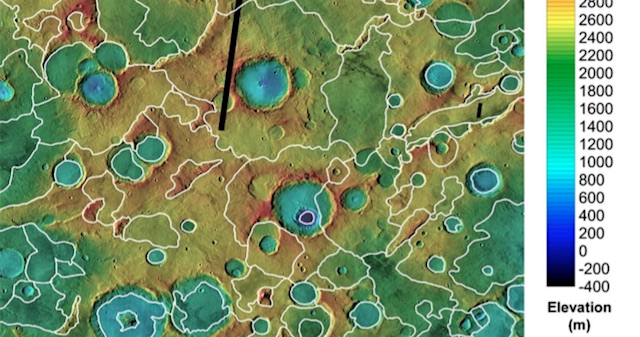 [Editor’s note: From a paper by Jon Cawley and Ross Irwin recently published in the Journal of Geophysical Research.]
[Editor’s note: From a paper by Jon Cawley and Ross Irwin recently published in the Journal of Geophysical Research.]
Evolution of Escarpments, Pediments, and Plains in the Noachian Highlands of Mars
• Debris‐mantled escarpments, regolith pediments, sloping aggradational surfaces, and depositional plains formed on Martian cratered terrain.
• Noachian arid‐zone geomorphology included aqueous weathering of basalt to fines, low‐intensity fluvial erosion, and deposition in basins.
• These processes smoothed and sealed Noachian ejecta blankets, which required little geomorphic work to form stable pediments.
The surface of Mars at Libya Montes, Noachis Terra, and Terra Cimmeria includes steep eroded slopes, gently to moderately sloping stable surfaces, gently sloping low areas that were thinly buried, and flat‐floored basins that accumulated thick deposits of sediment.
The development of these surface features suggests low‐intensity, intermittent erosion by running water and wind over hundreds of millions of years.
The key elements of this landscape evolution include weathering of Martian basaltic bedrock to finer‐grained sediments rather than coarse gravel, a lack of intense rainfall or snowmelt, minimal movement of loose material downslope, and processes that concentrated sediment in basins.
The blankets of material ejected from impact craters required little erosion to form stable and better sealed surfaces, which were later eroded by rivers during brief wetter epochs of Martian history. [More at link]








